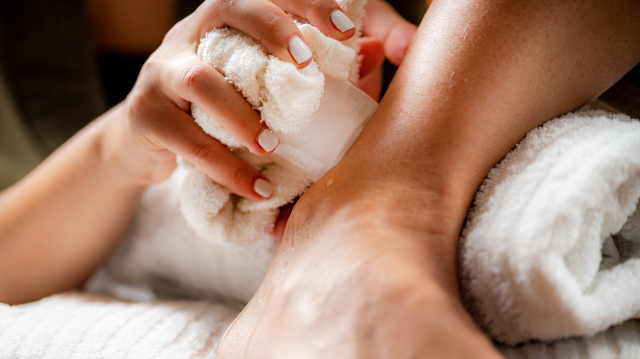Health Blog: Solutions & Wellness Tips
Navigating Posterior Tibialis Tendinitis Together

Posterior tibialis tendinitis is a condition that affects a lot of people, especially those who are active or on their feet a lot. Imagine the inside of your ankle and there’s a muscle running down there – that’s your posterior tibialis muscle. It plays a big role in holding up the arch of your foot and helping you walk. When the tendon (the tough band of tissue connecting muscle to bone) of this muscle gets inflamed or irritated, we call it posterior tibialis tendinitis.
Understanding the Strain: What is Posterior Tibialis Tendinitis?
The main reason people develop this condition is overuse. Runners, hikers, and athletes who put a lot of stress on their feet are at higher risk. But it’s not just athletes; anyone who suddenly increases their activity level or wears unsupportive footwear can find themselves dealing with this painful condition. Sometimes, an underlying issue like flat feet can put extra stress on the tendon, leading to tendinitis.
From the Ground Up: Causes and Risk Factors
If you’re experiencing pain along the inside of your ankle, especially when you’re active, you might be dealing with posterior tibialis tendinitis. This pain might start off mild and get worse over time. You might also notice swelling or a change in the shape of your foot, like a flattening of the arch.
Pain Relief in Motion: Physical Therapy's Role
- Rest and Ice: Initially, your therapist will likely recommend resting the affected foot and using ice to reduce inflammation.
- Exercises: They’ll teach you specific exercises to strengthen the posterior tibialis muscle and the other muscles that support your ankle and foot. These might include heel raises or exercises that involve picking up objects with your toes.
- Orthotics: Sometimes, custom orthotics (special shoe inserts) are used to support the arch of the foot and take some stress off the tendon.
- Manual Therapy: Techniques like massage or mobilizations can help improve movement and reduce pain in the foot and ankle.
A Step Ahead: Prevention Strategies for Healthy Feet
Prevention is always better than cure, so here are some tips to keep your ankles healthy:
- Wear Supportive Footwear: Shoes that support your arch and cushion your feet can make a big difference, especially if you’re on your feet a lot or increasing your activity level.
- Gradually Increase Activity: If you’re starting a new exercise program or sport, increase your activity level gradually to give your muscles and tendons time to adapt.
- Strengthen Your Feet and Ankles: Regularly doing exercises that strengthen your feet and ankles can help prevent tendinitis and other foot problems.
- Listen to Your Body: Pain is a signal that something might be wrong. If you start experiencing pain along the inside of your ankle, take a break from activities that make it worse and consider seeing a physical therapist.
Feeling the pinch in your step? Don't let ankle pain slow you down. Reach out to us today and take your first step towards a pain-free path. Remember, your feet carry you through life's journeys—give them the care they deserve.
Contact Us Today To Learn How We Can Help
For more detailed information on the treatment and prevention of posterior tibialis tendinitis, please refer to the study provided by BMJ Open Sport & Exercise Medicine.
April 3, 2024
Back to Health BlogRECENT POSTS
- Stretching Could Be A Game-Changer for Chronic Pain Relief
- Easing the Burden of Tension Headaches With Physical Therapy
- Got Heel Pain? New Study Reveals How to Outsmart Plantar Fasciitis
- How Physical Therapy Can Tame Whiplash-Related Symptoms
- Exercise Therapy May Provide Relief for Chemotherapy-Related Issues
- Unlocking Relief From Elbow Pain With Hands-On Therapy and Exercise
- Are Deep Squats Really as Bad as We Think?
- Reclaiming Your Grip: The Power of Hands-On Therapy for Tennis Elbow
- Runners Can Overcome a Common Knee Condition With Physical Therapy
- How Physical Therapy Can Help Older Adults Stay on Their Feet
